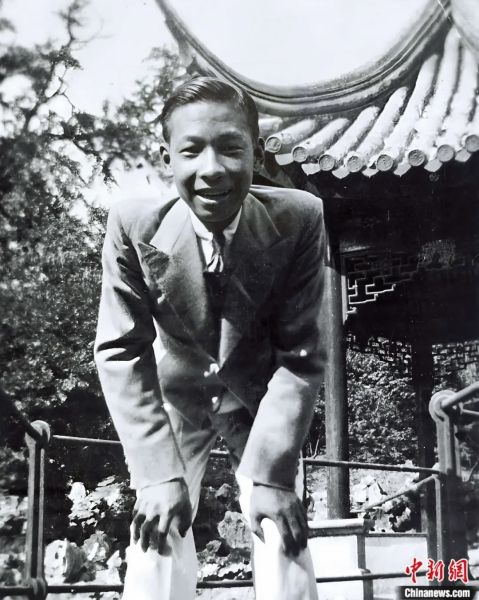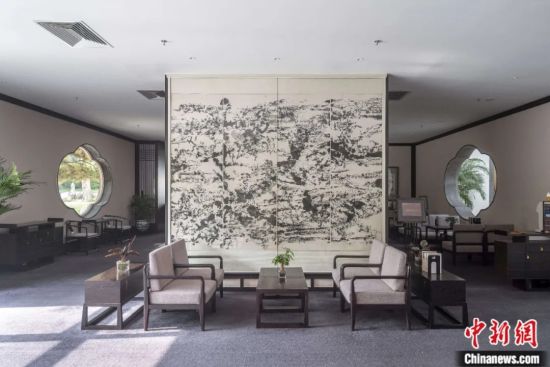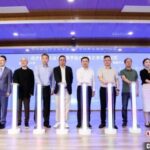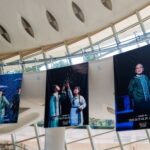How Does I.M. Pei’s Architectural Art Let Time “Provide All the Answers”?
As a world-renowned Chinese-American architect, I.M. Pei’s name, along with his iconic architectural works around the globe, has become timeless. His seamless bridging of Eastern and Western cultures, innovative spatial expressions, and relentless pursuit of architectural aesthetics have earned him acclaim as a master of modernist architecture. Currently, the first comprehensive retrospective exhibition of I.M. Pei in mainland China, “I.M. Pei: Life is Architecture,” is being held at the Shanghai Museum of Contemporary Art. Sandi Pei, I.M. Pei’s son and chairman of Pei Architects, discusses how his father’s architectural art merges Eastern spirit with Western modernism, creating an aesthetic resonance that transcends history and the future.
Below is a summary of the interview:
Question: Many of I.M. Pei’s designs subtly incorporate Chinese cultural elements, and your own works also reflect deep traditional Chinese influences. Having grown up in the U.S., how did you inherit this profound understanding and application of Chinese culture from your father?
Sandi Pei: My father was born in Guangzhou and spent his childhood in Suzhou and Shanghai before moving to the U.S. at 17. His time in China gave him a holistic understanding of landscapes and the integration of art and architecture. The Lion Grove Garden, a famous classical Chinese garden in Suzhou, was once our family home. Its large pond and intricate rock formations deeply influenced my father’s design philosophy. He saw in these rocks the interplay of time and scenery, as well as the importance of harmony between humanity and nature. This inspired him to create architecture that connects past, present, and future.

My father taught us that architectural design must be approached thoughtfully, with consideration for long-term impact. This requires an understanding of history, culture, and innovative solutions to contemporary challenges. As a Chinese-American architect in the West, I embrace his belief that we have a responsibility to create buildings that contribute meaningfully to their surroundings—not just as standalone structures but as part of a larger urban and natural context.
Question: I.M. Pei’s designs transcend stylistic boundaries, bridging history and modernity while blending modernist aesthetics with local traditions. How did he achieve this?
Sandi Pei: My father was deeply curious about different cultures and civilizations. His study was like a small library, filled with books on architecture, art, history, and more in multiple languages. He approached each project with scholarly rigor, conducting extensive on-site research to grasp the essence of a place. This allowed his buildings to reflect the spirit of diverse cultures effortlessly.
He also embraced cutting-edge technology, applying the latest innovations to enhance architectural quality. His works feel fresh and forward-thinking, not because they mimic tradition but because they elevate living standards and inspire future developments. Additionally, he believed in the power of collaboration between architecture and art. Over his 75-year career, he commissioned artists for nearly 60 projects, integrating their works seamlessly into the built environment—from Picasso sculptures in New York to Zao Wou-Ki’s ink paintings in Beijing’s Fragrant Hills Hotel.

Question: You collaborated with your father on Hong Kong’s Bank of China Tower. Three decades later, how does the Shanghai Lingang Dripping Lake International Trade Center (provisional name) carry forward the essence of Pei’s architectural legacy?
Sandi Pei: The Bank of China Tower, designed over 40 years ago, pioneered a three-dimensional structural system to maximize strength while minimizing steel usage. For the Lingang project, we refined this approach—enlarging windows for broader views, using lighter diagonal supports, and increasing ceiling heights. We also incorporated sustainable technologies to reduce energy consumption. This design represents a new pinnacle of our philosophy.






